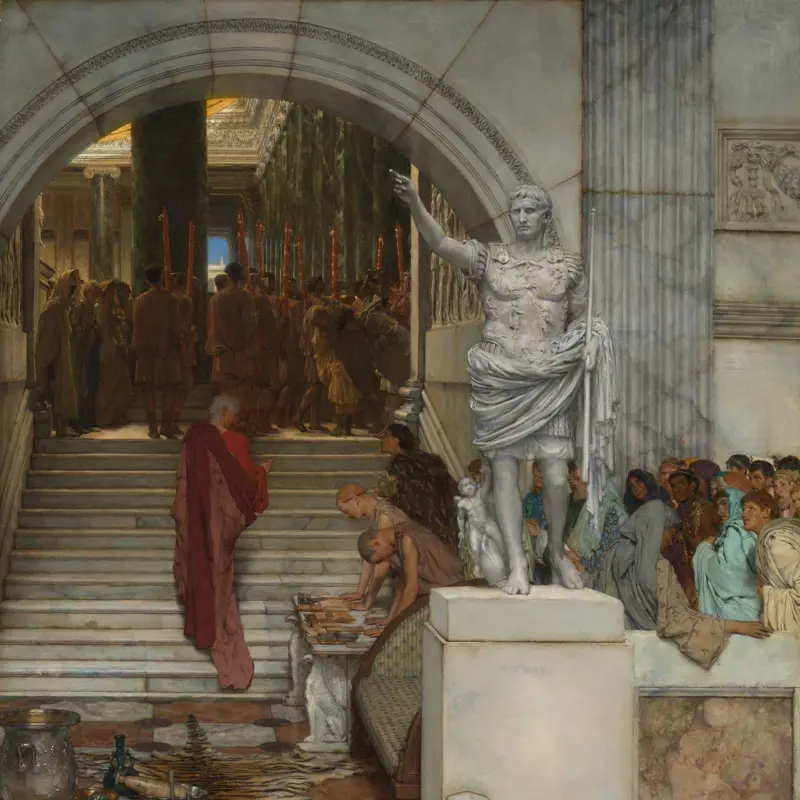Alma-Tadema was born in Friesland, the Netherlands, and attended the Academy of Fine Arts in Antwerp. At age 16, he became assistant to Louis Jan de Taeye (1822‒1890) who encouraged drawing inspiration from the Ancient world, with historical accuracy. He then joined the studio of Jan August Hendrik Leys (1815‒1869) where he refined his skills.
Originally concentrating on Merovingian and Egyptian subjects, Alma-Tadema’s focus would change after visiting Italy on his honeymoon in 1864 and taking an extensive tour of Roman sites, particularly the ruins of Pompeii and Herculaneum.
In 1864 he won a gold medal at the Paris Salon. He first visited London in 1869, and the following year he permanently relocated to the UK. He befriended Ford Madox Brown and many prominent Pre-Raphaelite painters. His use of bright colours is often associated with them. However, his focus on Greek and Roman themes can be compared more closely with the classicism of Frederic, Lord Leighton (1830‒1896) and John William Waterhouse (1849‒1917). In his adopted country, he ascended at speed through the Victorian art establishment, becoming first an Associate of the Royal Academy in 1879, and then a full member in 1879. In 1899 he was knighted, and he received the Order of Merit in 1905.

